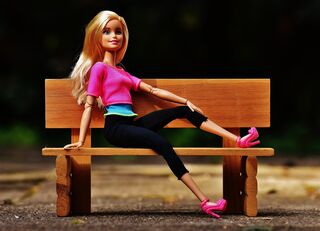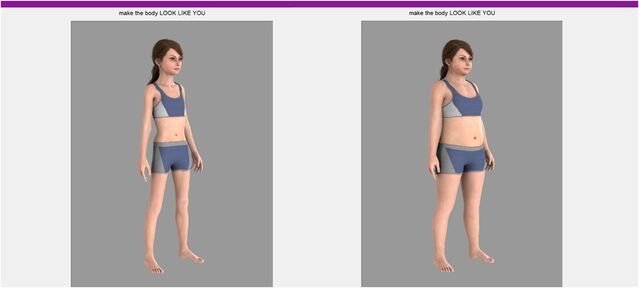Body Image
Barbies May Do Damage That Realistic Dolls Can't Undo
New research provides more evidence that Barbies are bad news.
Posted March 23, 2021 Reviewed by Abigail Fagan
- Body image develops between 6 and 11 years old. Dolls, as well as the media, can influence that process.
- In a recent study, girls who played with extremely thin dolls chose a thinner body ideal than girls who played with realistically proportioned dolls.
- Playing with realistic dolls after playing with extremely thin dolls did not counteract those effects.

Dolls are one of the most popular types of toys for young girls. Many dolls marketed to young girls have ultra-thin, adult bodies with large breasts and extremely narrow waists. These dolls tend to have body sizes that would translate to a dangerously thin body in a human woman.
Though Barbie dolls are frequently criticized in this domain, other dolls have even more exaggerated body shapes. Monster High dolls, for example, would have body mass indices below 10 if translated into human bodies – a size that cannot support life. Although parents can find dolls with more realistic, child-like proportions, Barbie remains the best-selling doll in the world.
New research published in the journal Body Image tested how the effects of playing with ultra-thin dolls (Barbie and Monster High dolls) compared with playing with more realistically proportioned dolls (Dora and Lottie dolls). The ultra-thin dolls changed girls’ perceptions of the ideal body shape, moving it toward the thinner end of the spectrum. Unfortunately, playing with realistic dolls didn't undo these negative effects.
Body image struggles are common among pre-adolescent girls and are linked to long-term outcomes that include eating disorders and depression. The authors of this new research argue that 6 to 11 years old is a key time period when it comes to the development of girls’ body image. During this time, girls may begin to internalize an ultra-thin, unrealistic body ideal.
This is also the age range during which girls often begin to feel the effects of the cultural objectification of women’s bodies. Those who begin to view their own bodies from this objectified perspective are at greater risk for developing serious depression in adolescence.

Media images of women’s bodies can shape what we find beautiful or desirable. Repeated exposure to a specific type of ideal can increase your preference for it – especially when that ideal body is paired with images of wealth, happiness, and success. In this respect, dolls can function as a type of media with the power to influence girls’ body image. In a newly-published pair of studies, researchers explored how the impact of playing with ultra-thin dolls might differ from the impact of playing with more life-like, realistically proportioned dolls.
Playing with Different Dolls Leads to Different Body Ideals
In the first study, 35 British girls aged 5 to 9 first completed a computerized assessment of their body image and body ideals. In this assessment, the girls could use a mouse to change the body size of the girl or woman they saw on a screen. Moving the mouse in one direction made the body they saw thinner; moving in the other direction made it fatter. The bodies used in the assessment were based on 3-D scans of actual children and adults, and thus were realistic.
First, the girls were asked to select the body that looked most like them. Then they were asked, “How would you most like to look?” The body they chose in response to this question was labeled their “ideal body.” The distance between their ideal body and their perception of their own body was used as a measure of body dissatisfaction.

After the computer task, the girls were given two dolls to play with for five minutes. They were randomly assigned to receive either ultra-thin dolls (a Barbie and a Monster High doll) or dolls that were designed to mimic the realistic size and shape of girls approximately their age (a Dora the Explorer doll and a Lottie doll). They chose one of the two dolls they were offered, then engaged in play either with another child or with the researcher. You can see a video of one pair of girls in this study here. After playing with the dolls, the girls completed the computer assessment once again.

The authors found that playing with the Barbie/Monster High dolls led the girls to select a thinner “ideal self” when they repeated the computer task. The realistically proportioned dolls did not change the girls’ idea of an ideal body. However, playing with the realistic dolls increased the girls’ body satisfaction.
In a follow-up study with 54 British girls between the ages of 5 and 10, the authors tested whether playing with the realistic dolls for a few minutes could undo the negative effects of playing with the ultra-thin dolls. All the girls played with the Barbie/Monster High dolls for three minutes, then they were randomly split into three groups. One group had a second play session with the ultra-thin dolls, one group played with the realistic dolls, and a third group played with cars.
The same computerized assessment used in the first study revealed that once again, playing with the Barbie/Monster High dolls led girls to select a thinner ideal body for themselves. Unfortunately, there was no evidence that playing with realistic dolls after playing with the ultra-thin dolls could undo this effect. Instead, the initial shift in the girls’ perceptions of an ideal body after playing with the ultra-thin dolls tended to stick.
What Parents Should Know
What’s the take-home message from this research for parents? It seems like a good idea to steer children away from ultra-thin, adult-like dolls and stick with dolls that look more like actual children. This may be a difficult undertaking, however, as many young children already show a strong preference for ultra-thin dolls.
Nonetheless, it’s worth remembering that girls’ body image starts to form early. Girls pick up on messages from family members, their peers, and the media about what types of bodies our culture finds acceptable or valuable. Even a small step toward changing the content of those messages can make a difference.
Facebook image: DinosArt/Shutterstock




